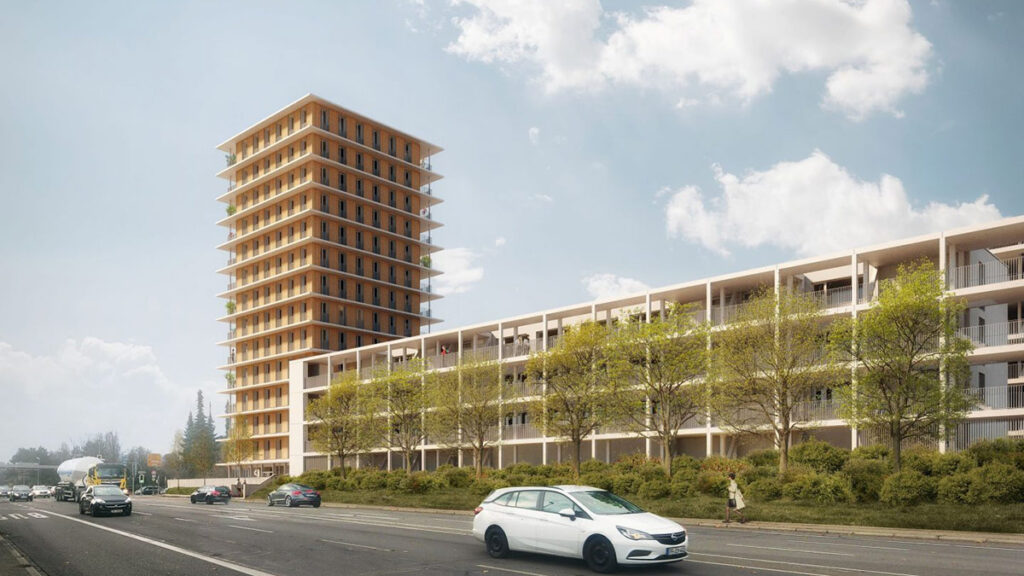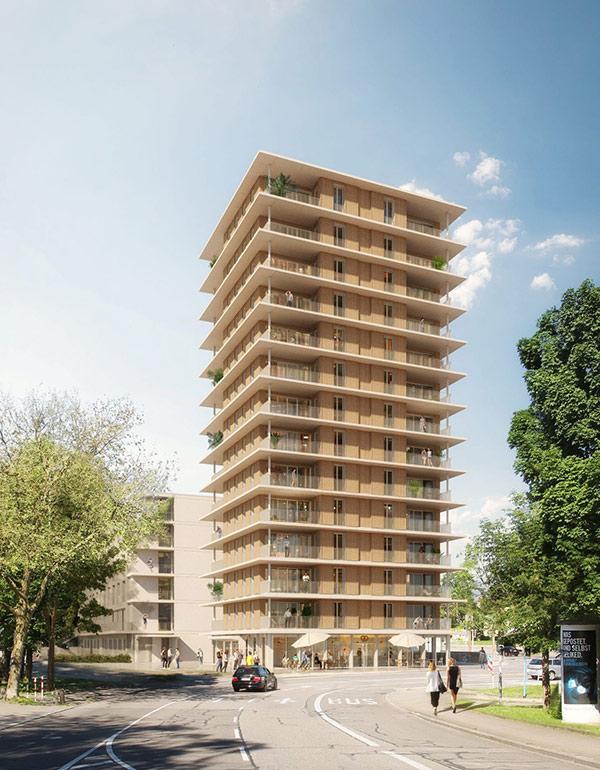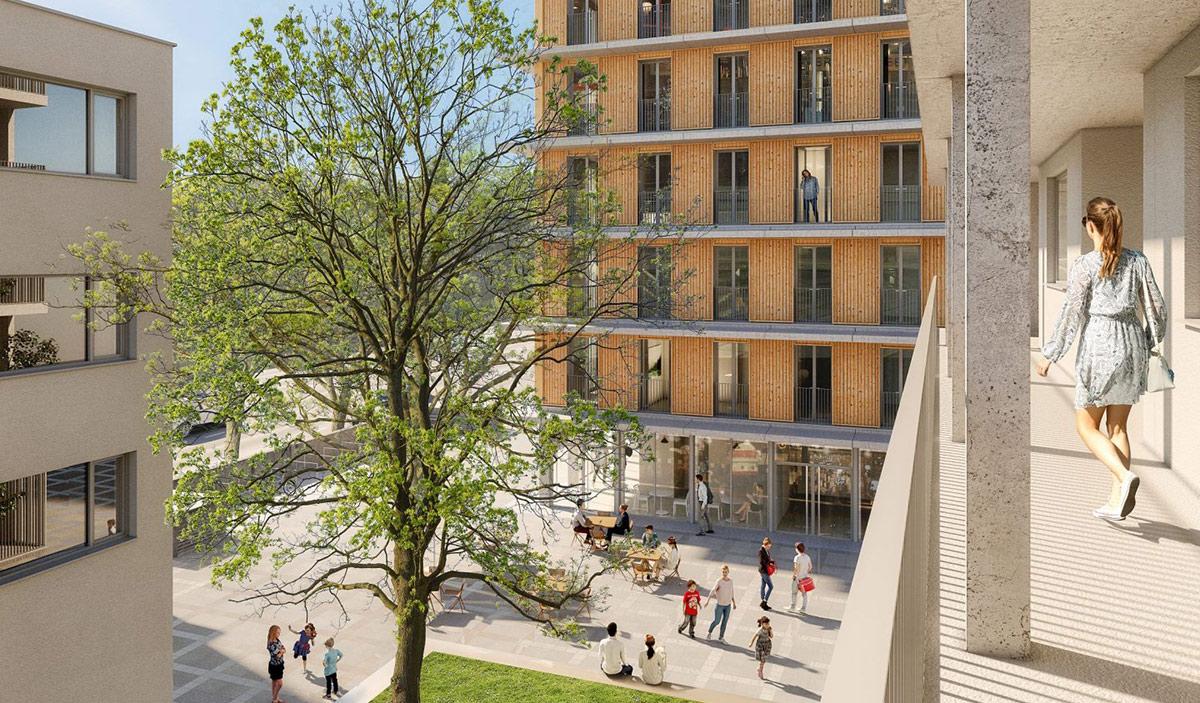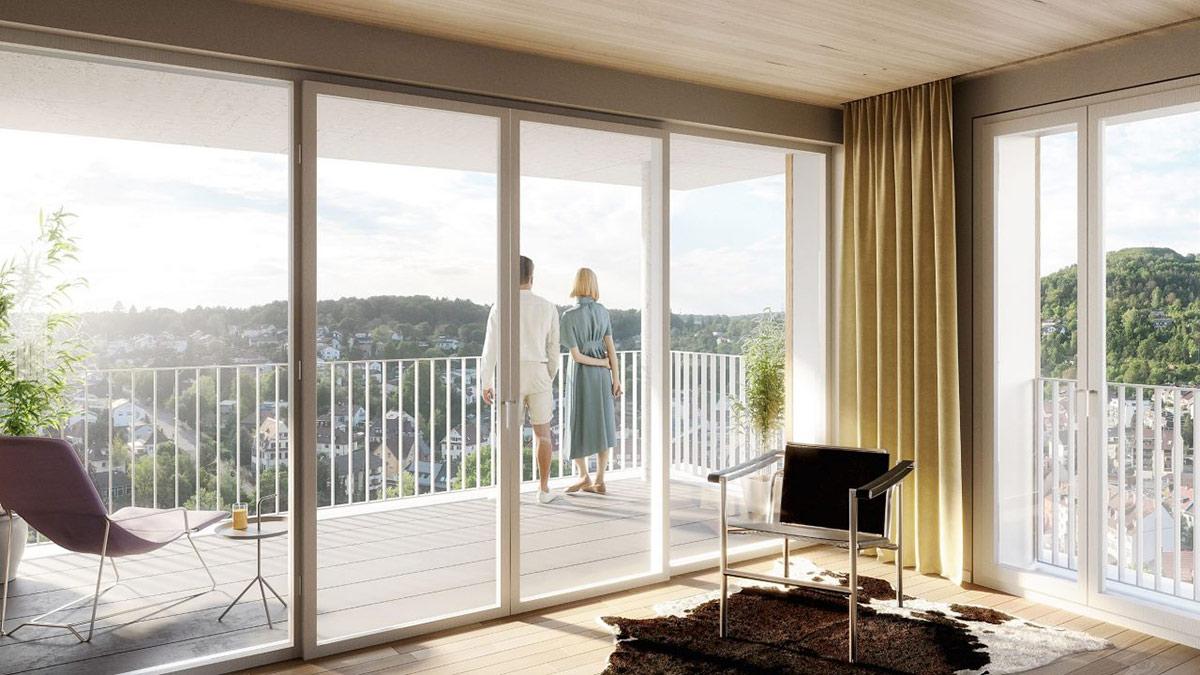It’s time for Carl
May we introduce Carl? Using timber for its facade besides the supporting structure, the apartment block is currently under construction in Pforzheim. Architect Peter W. Schmidt explains how this is being done.
Pforzheim is also known as the gateway to Germany’s Black Forest. It has wood literally on its doorstep, a raw material that is readily available. While woodlands are disappearing in other parts of the world, in Central Europe – including Germany – overall they are increasing. This is due to sustainable forestry, which has been practised here for centuries. Arlinger Building Cooperative has calculated that the quantity of wood required for its high-rise project named Carl regrows across Germany in less than five minutes.
Timber construction centre stage in the Black Forest
With the aim of pressing ahead with modern, climate-friendly timber construction, a few years ago the German state of Baden-Württemberg placed timber construction centre stage and now presents a timber construction award every year. Ever since the state’s building regulations were amended in 2014, timber construction projects up to the height of a normal high-rise have been permitted here. Although building with timber is no longer especially innovative when it comes to detached houses, plyscrapers – another name for timber high-rises – are new territory.
Regional history and an affinity with wood as a material are returning to the centre of attention.
Peter W. Schmidt, architect
The developers in Arlinger – a district of Pforzheim – are therefore working with an expert in engineered timber construction from Bregenz Forest. Any specific issues that arise can be additionally clarified in consultation with a research institute. The apartment block was planned by architect Peter W. Schmidt. He highlights the regional significance of the project, which will reach a height of 38 metres: “Regional history and an affinity with wood as a material are returning to the centre of attention. At the same time, the project acts as sustainable stimulus to counteract the shortage of housing.”
High-tech construction material
The timber used for plyscrapers is a compact high-tech construction material that is in no way inferior to conventional construction methods that use concrete and steel. Equivalent engineered timber elements display a high load capacity with a low weight.
As numerous fire safety tests have already confirmed, this modern constructional timber achieves excellent fire protection results. It is crucial that the structure is maintained in the case of fire, allowing residents enough time to leave the building.
Timber facade
Around 2,000 m³ local wood are expected to be required for Carl, which will consist of over 80% timber. This 14-storey high-rise is a timber hybrid construction, and will therefore include concrete as reinforcement. In most cases, like with Carl, reinforced concrete is used for the building core with the staircase.
Besides the supporting structure, the facade will also be made of timber, which is unusual for timber high-rise buildings. The storeys are separated by a wide brim that extends out beyond the facade to protect it from the weather. “Thanks to a one-metre cantilevered brim designed to prevent fire flashover, the cladding can also be made of timber,” the architect explains.
Energy efficient and sustainable
The excellent insulation properties of wood were discovered long ago. This high-rise, named Carl after Arlinger founder Carl Hölzle, will be an energy-efficient house according to KfW standard 55. The figure signifies that only 55% of the energy used by a conventional, comparable building is required. Its sustainability concept includes underground car parking spaces with chargers for electric cars. A photovoltaic system on the roof will supply green energy for future tenants.
In addition to the 14-storey Carl, the plans include two more sections with four and six storeys. Overall, Arlinger building cooperative will be creating 73 apartments here, with a total area of over 5,300 m². Childcare facilities and a bakery with adjoining café will also be on offer. The building cooperative is convinced of the benefits: “Together with the neighbouring buildings, Carl and the entire ensemble will create a compelling aesthetic and act as a landmark at the entrance to the town.”
Second-tallest timber high-rise in Germany
Ground was broken for this timber construction project in October 2021. Prefabricated timber parts were fitted between February and October 2022, and completion is scheduled for November 2023. The tower block Roots in Hamburg is due to be finished in 2023 as well. And so it seems that the race for the title “Germany’s tallest timber high-rise” will be won by Carl’s rival from northern Germany, which will eclipse Carl by an extra 27 metres.
Text: Gertraud Gerst
Translation: Rosemary Bridger-Lippe
Visualizations: PWS Architekten



